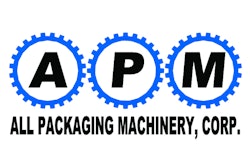
In Europe, regulation drives the process. In the US, the market primarily drives reaction and change.
Carroll says, “Understandably, therefore, the market leader, in this case Wal-Mart, has, in one fell swoop, succeeded in getting everybody’s attention. Secondly, because there is no federal legislation in the United States specifically targeting packaging and its environmental impact, the concept of harmonization to avoid trade barriers is not an issue at federal level.”
This perceptive comment can help us in our understanding of U.S. packaging policies. As eager as some people are to see recycling and reuse become the law, or at least the habit in the U.S., the reality is that there has to be an economic incentive to cause commercial interests to spring into action. Governmental legislation alone will not tackle the issue.
It’s a three-legged stool. People, business, and government all have roles to play. To leave one ‘leg’ off only allows for a very unstable, unsustainable relationship.
Most hard line Greens mean well, and they make some valid points. But there is, in the real world, a need for common sense when it comes to sustainable packaging, or sustainable anything, for that matter.
Companies and people need to make an effort, a commitment really, to address this issue simply because it is the right thing to do. There are lots of ways to accomplish some of these goals on a revenue neutral basis, at the very least.
For example, my company just spent a modest sum of about $6,000 to replace all the antiquated fluorescent lighting in our offices with T-8 fixtures and tubes. What’s the payback? Reduction in electricity consumption by about 10%. It’s not packaging, but it’s a good example. We are also about to begin recycling everything we can get our hands on in our building. Scrap steel and plastic strapping, stretch film, cans, bottles, copy paper, and corrugated boxes. And we found a local company that will actually pay us a small amount to take the non-reusable materials off our hands. That’s common sense, and revenue positive!
One of my U.S. colleagues recently commented to me that, in his opinion, the sustainable packaging movement appears to be morphing into a cost-cutting program. From an environmental perspective that may or may not be viewed as positive. From a practical, common sense point of view, it’s certainly a step in the right direction.
In contrast, developing countries such as Ghana, India, China, Sri Lanka, to name a few, are capable of starting at a more highly developed position in terms of packaging materials and methods.
Developing countries have no “sunk costs” in old packaging methods and habits. They have the advantage of taking what we have had to learn and applying that knowledge to new packaging projects immediately. This circumstance suggests a significant competitive advantage for some of the manufacturers in those countries on Day One, especially when coupled with their already low manufacturing costs and a practical mandate to do more with less.
Finally, sustainable packaging cannot work in isolation. It is an important part of the global sustainability movement. It’s about changing our habits and our mindset so that we think in a different hierarchy, with reduce, reuse, recycle, and recover nearer the top of the list.
This new way of thinking should play well in the packaging community. Dr. Carl Olsmats, General Secretary of the World Packaging Organisation states, “It is not primarily an issue of sustainable packaging, but rather how packaging can best contribute to a sustainable society. This contribution will also change over time as knowledge and society develops. [Ultimately,] there will be no sustainable packaging without sustainable products to put into them. These products will not be made unless there are sustainable companies to make them. And these companies need a sustainable society in which to work. [Sustainable Packaging] in principle means that continuous improvement has to be applied to all packaging.”
A sustainable society demands, without really knowing it, that packaging professionals “get it right.” Efficient and effective use of resources in packaging is an essential component in society’s goal of becoming Sustainable. The greatest minds in packaging, around the world, would do well to contemplate this business and social opportunity.























